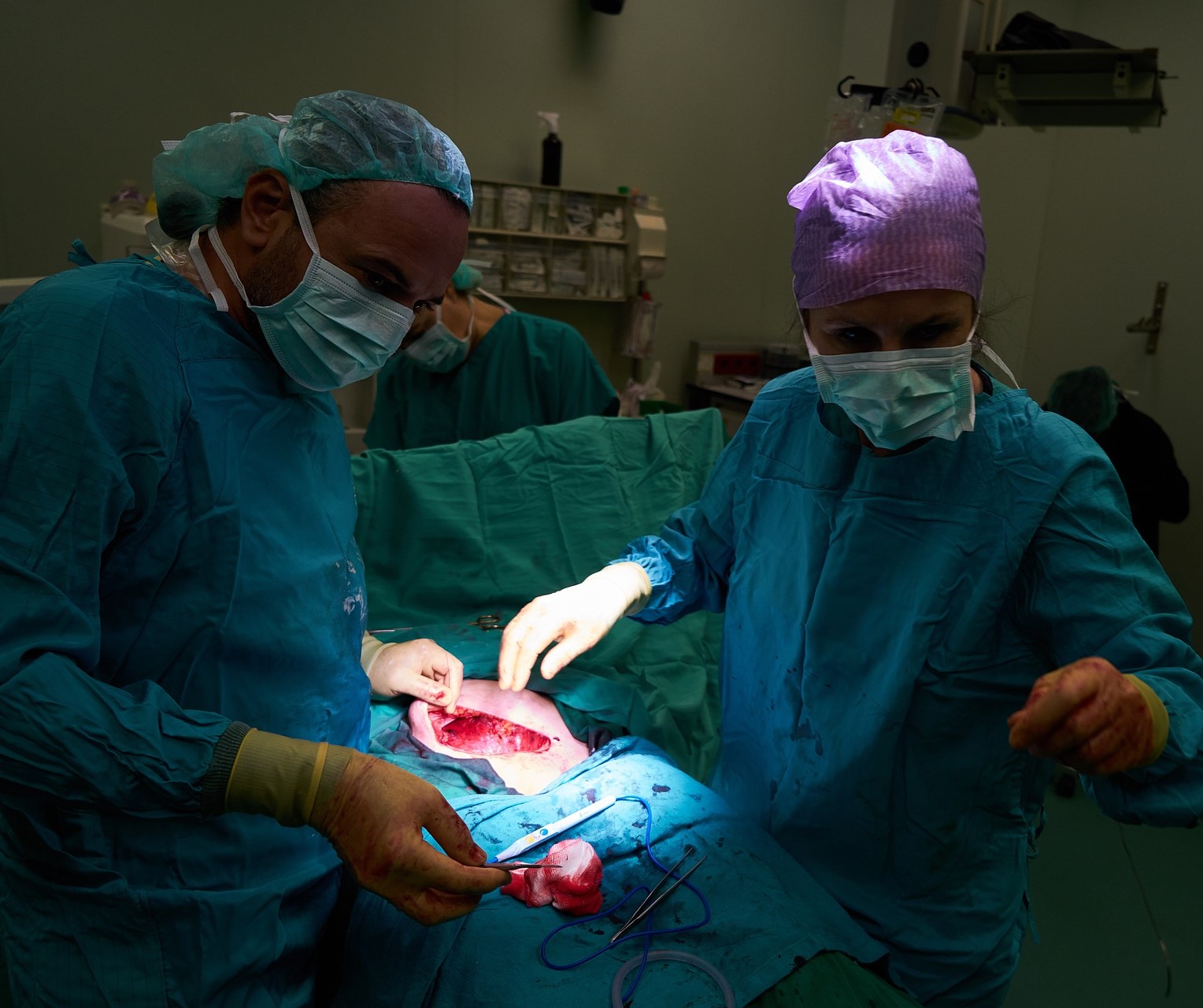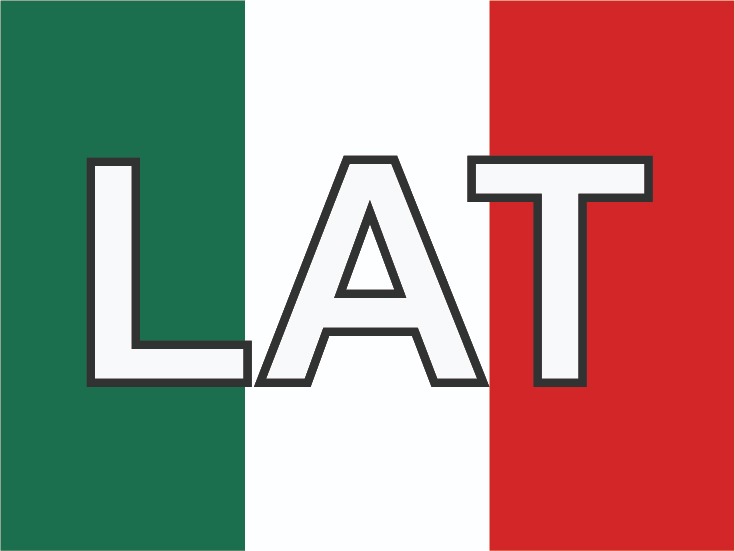REBOA as a New Damage Control Component in Hemodynamically Unstable Noncompressible Torso Hemorrhage Patients
Abstract
Noncompressible torso hemorrhage is one of the leading causes of preventable death worldwide. An efficient and appropriate evaluation of the trauma patient with ongoing hemorrhage is essential to avoid the development of the lethal diamond (hypothermia, coagulopathy, hypocalcemia, and acidosis). Currently, the initial management strategies include permissive hypotension, hemostatic resuscitation, and damage control surgery. However, recent advances in technology have opened the doors to a wide variety of endovascular techniques that achieve these goals with minimal morbidity and limited access. An example of such advances has been the introduction of the Resuscitative Endovascular Balloon Occlusion of the Aorta (REBOA), which has received great interest among trauma surgeons around the world due to its potential and versatility in areas such as trauma, gynecology & obstetrics and gastroenterology. This article aims to describe the experience earned in the use of REBOA in noncompressible torso hemorrhage patients. Our results show that REBOA can be used as a new component in the damage control resuscitation of the severely injured trauma patient. To this end, we propose two new deployment algorithms for hemodynamically unstable noncompressible torso hemorrhage patients: one for blunt and another for penetrating trauma. We acknowledge that REBOA has its limitations, which include a steep learning curve, its inherent cost and availability. Although to reach the best outcomes with this new technology, it must be used in the right way, by the right surgeon with the right training and to the right patient.
Authors
Downloads
Keywords
- Resuscitative Endovascular Balloon Occlusion of the Aorta ;
- Damage Control
- Non-Compressible Torso Hemorrhage
- Hemodynamically Unstable
- Wounds, Gunshot
- Injury Severity Score
- Trauma Centers
- Advanced Trauma Life Support Care
- Balloon Occlusion
- Wounds, Nonpenetrating
- Endovascular Procedures
- REBOA
References
White JM, Stannard A, Burkhardt GE, Eastridge BJ, Blackbourne LH, Rasmussen TE. The epidemiology of vascular injury in the wars in Iraq and Afghanistan. Ann Surg 2011;253:1184–9. https://doi.org/10.1097/SLA.0b013e31820752e3.
Moore FA, McKinley BA, Moore EE. The next generation in shock resuscitation. Lancet 2004;363:1988–96. https://doi.org/10.1016/S0140-6736(04)16415-5.
Ditzel RM, Anderson JL, Eisenhart WJ, Rankin CJ, DeFeo DR, Oak S, et al. A review of transfusion- And trauma-induced hypocalcemia: Is it time to change the lethal triad to the lethal diamond? J Trauma Acute Care Surg 2020;88:434–9. https://doi.org/10.1097/TA.0000000000002570.
Stawicki SP, Brooks A, Bilski T, Scaff D, Gupta R, Schwab CW, et al. The concept of damage control: Extending the paradigm to emergency general surgery. Injury 2008;39:93–101. https://doi.org/10.1016/j.injury.2007.06.011.
Hörer TM, Skoog P, Pirouzram A, Nilsson KF, Larzon T. A small case series of aortic balloon occlusion in trauma: lessons learned from its use in ruptured abdominal aortic aneurysms and a brief review. Eur J Trauma Emerg Surg 2016;42:585–92. https://doi.org/10.1007/s00068-015-0574-0.
Hörer T, Pirouzram A, Khan M, Brenner M, Cotton B, Duchesne J. Endovascular Resuscitation and Trauma Management (EVTM) - Practical Aspects and Implementation; Publish ahead. Shock 2020.
Du Bose JJ, Scalea TM, Brenner M, Skiada D, Inaba K, Cannon J, et al. The AAST prospective Aortic Occlusion for Resuscitation in Trauma and Acute Care Surgery (AORTA) registry: Data on contemporary utilization and outcomes of aortic occlusion and resuscitative balloon occlusion of the aorta (REBOA). vol. 81. 2016. https://doi.org/10.1097/TA.0000000000001079.
Ordoñez CA, Rodríguez F, Parra M, Herrera JP, Guzmán-Rodríguez M, Orlas C, et al. Resuscitative endovascular balloon of the aorta is feasible in penetrating chest trauma with major hemorrhage: Proposal of a new institutional deployment algorithm. J Trauma Acute Care Surg 2020;89:311–9. https://doi.org/10.1097/ta.0000000000002773.
Faulconer ER, Branco BC, Loja MN, Grayson K, Sampson J, Fabian TC, et al. Use of open and endovascular surgical techniques to manage vascular injuries in the trauma setting: A review of the American Association for the Surgery of Trauma PROspective Observational Vascular Injury Trial registry. J Trauma Acute Care Surg 2018;84:411–7. https://doi.org/10.1097/TA.0000000000001776.
Stannard A, Eliason JL, Rasmussen TE. Resuscitative endovascular balloon occlusion of the aorta (REBOA) as an adjunct for hemorrhagic shock. J Trauma - Inj Infect Crit Care 2011;71:1869–72. https://doi.org/10.1097/TA.0b013e31823fe90c.
Meléndez JJ, Ordóñez CA, Parra MW, Orlas CP, Manzano-Núñez R, García AF, et al. Balón de reanimación endovascular de aorta para pacientes en riesgo de o en choque hemorrágico: experiencia en un centro de trauma de Latinoamérica. Rev Colomb Cirugía 2019;34:124–31. https://doi.org/10.30944/20117582.106.
Manzano Nunez R, Naranjo MP, Foianini E, Ferrada P, Rincon E, García-Perdomo HA, et al. A meta-analysis of resuscitative endovascular balloon occlusion of the aorta (REBOA) or open aortic cross-clamping by resuscitative thoracotomy in noncompressible torso hemorrhage patients. World J Emerg Surg 2017;12:30. https://doi.org/10.1186/s13017-017-0142-5.
McGreevy DT, Abu-Zidan FM, Sadeghi M, Pirouzram A, Toivola A, Skoog P, et al. Feasibility and Clinical Outcome of Reboa in Patients with Impending Traumatic Cardiac Arrest. Shock 2019. https://doi.org/10.1097/SHK.0000000000001500.
Beyer CA, Hoareau GL, Tibbits EM, Davidson AJ, DeSoucy ED, Simon MA, et al. Resuscitative endovascular balloon occlusion of the aorta induced myocardial injury is mitigated by endovascular variable aortic control. J Trauma Acute Care Surg 2019;87:590–8. https://doi.org/10.1097/TA.0000000000002363.
Tibbits EM, Hoareau GL, Simon MA, Davidson AJ, DeSoucy ES, Faulconer ER, et al. Location is everything: The hemodynamic effects of REBOA in Zone 1 versus Zone 3 of the aorta. J Trauma Acute Care Surg 2018;85:101–7. https://doi.org/10.1097/TA.0000000000001858.
Yamashiro KJ, Wishy AM, Beyer CA, Kashtan HW, Galganski LA, Grayson JK, et al. Resuscitative endovascular balloon occlusion of the aorta (REBOA) in a pediatric swine liver injury model: A pilot study. J Pediatr Surg 2020;55:346–52. https://doi.org/10.1016/j.jpedsurg.2019.10.013.
Wikström MB, Krantz J, Hörer TM, Nilsson KF. Resuscitative endovascular balloon occlusion of the inferior vena cava is made hemodynamically possible by concomitant endovascular balloon occlusion of the aorta-A porcine study. J Trauma Acute Care Surg 2020;88:160–8. https://doi.org/10.1097/TA.0000000000002467.
García AF, Manzano-Nunez R, Orlas CP, Ruiz-Yucuma J, Londoño A, Salazar C, et al. Association of resuscitative endovascular balloon occlusion of the aorta (REBOA) and mortality in penetrating trauma patients. Eur J Trauma Emerg Surg 2020:10.1007/s00068-020-01370–9. https://doi.org/10.1007/s00068-020-01370-9.
Manzano-Nunez R, Escobar-Vidarte MF, Naranjo MP, Rodriguez F, Ferrada P, Casallas JD, et al. Expanding the field of acute care surgery: a systematic review of the use of resuscitative endovascular balloon occlusion of the aorta (REBOA) in cases of morbidly adherent placenta. Eur J Trauma Emerg Surg 2018;44:519–26. https://doi.org/10.1007/s00068-017-0840-4.
Ordoñez CA, Parra MW, Manzano-Nunez R, Herrera-Escobar JP, Serna JJ, Rodriguez Ossa P, et al. Intraoperative combination of resuscitative endovascular balloon occlusion of the aorta and a median sternotomy in hemodynamically unstable patients with penetrating chest trauma: Is this feasible? J Trauma Acute Care Surg 2018;84:752–7. https://doi.org/10.1097/TA.0000000000001807.
Brenner M, Moore L, Teeter W, Hu P, Yang S, Wasicek P, et al. Exclusive clinical experience with a lower profile device for resuscitative endovascular balloon occlusion of the aorta (REBOA). Am J Surg 2019;217:1126–9. https://doi.org/10.1016/j.amjsurg.2018.11.029.
Joseph B, Zeeshan M, Sakran J V, Hamidi M, Kulvatunyou N, Khan M, et al. Nationwide Analysis of Resuscitative Endovascular Balloon Occlusion of the Aorta in Civilian Trauma. JAMA Surg 2019;154:500–8. https://doi.org/10.1001/jamasurg.2019.0096.
Cannon JW, Khan MA, Raja AS, Cohen MJ, Como JJ, Cotton BA, et al. Damage control resuscitation in patients with severe traumatic hemorrhage: A practice management guideline from the Eastern Association for the Surgery of Trauma. J. Trauma Acute Care Surg., vol. 82, Lippincott Williams and Wilkins; 2017, p. 605–17. https://doi.org/10.1097/TA.0000000000001333.
Ryan G, Swift K, Williamson F, Scriven E, Zheng O, Eley R. Feasibility of reboa—resuscitative endovascular balloon occlusion of the aorta—in trauma-related noncompressible torso hemorrhage at two metropolitan trauma centers. Ochsner J 2018;18:201–3. https://doi.org/10.31486/toj.18.0025.
Ordoñez CA, Khan M, Cotton B, Perreira B, Brenner M, Ferrada P, et al. The Colombian Experience in Resuscitative Endovascular Balloon Occlusion of the Aorta (REBOA): The Progression from a Large Caliber to a Low-Profile Device at a Level I Trauma Center. Shock 2020. https://doi.org/10.1097/SHK.0000000000001515.
Ribeiro Junior MAF, Feng CYD, Nguyen ATM, Rodrigues VC, Bechara GEK, de-Moura RR, et al. The complications associated with Resuscitative Endovascular Balloon Occlusion of the Aorta (REBOA). World J Emerg Surg 2018;13. https://doi.org/10.1186/s13017-018-0181-6.
Vrancken SM, Borger van der Burg BLS, Vrancken PJEM, Kock GAH, Rasmussen TE, Hoencamp R. A contemporary assessment of devices for Resuscitative Endovascular Balloon Occlusion of the Aorta (REBOA): resource-specific options per level of care. Eur J Trauma Emerg Surg 2020. https://doi.org/10.1007/s00068-020-01382-5.
Knipp BS, Needham KE, Nguyen PT, Keville MP, Brzuchalski JT, Srivilasa C, et al. Leaning Forward - Early Arterial Access Promotes REBOA Utilization in Battlefield Casualties. J Trauma Acute Care Surg 2020. https://doi.org/10.1097/TA.0000000000002790.
Beyer CA, Johnson MA, Galante JM, DuBose JJ. Zones matter: Hemodynamic effects of zone 1 vs zone 3 resuscitative endovascular balloon occlusion of the aorta placement in trauma patients. Injury 2019;50:855–8. https://doi.org/10.1016/j.injury.2019.03.013.
Kuckelman JP, Barron M, Moe D, Derickson M, Phillips C, Kononchik J, et al. Extending the golden hour for Zone 1 resuscitative endovascular balloon occlusion of the aorta: Improved survival and reperfusion injury with intermittent versus continuous resuscitative endovascular balloon occlusion of the aorta of the aorta in a porcin. J Trauma Acute Care Surg 2018;85:318–26. https://doi.org/10.1097/TA.0000000000001964.
Bulger EM, Perina DG, Qasim Z, Beldowicz B, Brenner M, Guyette F, et al. Clinical use of resuscitative endovascular balloon occlusion of the aorta (REBOA) in civilian trauma systems in the USA, 2019: a joint statement from the American College of Surgeons Committee on Trauma, the American College of Emergency Physicians, the National Association of Emergency Medical Services Physicians and the National Association of Emergency Medical Technicians. Trauma Surg Acute Care Open 2019;4:e000376. https://doi.org/10.1136/tsaco-2019-000376.
Sadeghi M, Hörer TM, Forsman D, Dogan EM, Jansson K, Kindler C, et al. Blood pressure targeting by partial REBOA is possible in severe hemorrhagic shock in pigs and produces less circulatory, metabolic and inflammatory sequelae than total REBOA. Injury 2018;49:2132–41. https://doi.org/10.1016/j.injury.2018.09.052.

Copyright (c) 2020 Universidad del Valle

This work is licensed under a Creative Commons Attribution-NonCommercial 4.0 International License.
The copy rights of the articles published in Colombia Médica belong to the Universidad del Valle. The contents of the articles that appear in the Journal are exclusively the responsibility of the authors and do not necessarily reflect the opinions of the Editorial Committee of the Journal. It is allowed to reproduce the material published in Colombia Médica without prior authorization for non-commercial use

 https://orcid.org/0000-0003-4495-7405
https://orcid.org/0000-0003-4495-7405


















